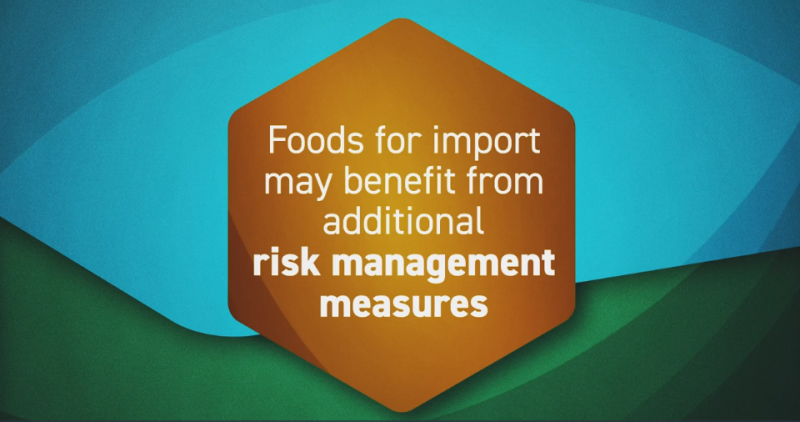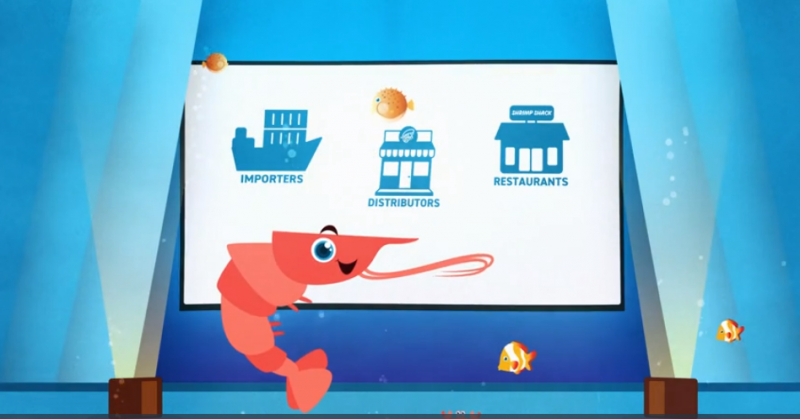Seafood
FDA is responsible for ensuring that the nation's seafood supply, both domestic and imported, is safe, sanitary, wholesome, and honestly labeled. This page provides access to content about seafood, including fish and shellfish, from across the Food section of FDA.gov. Grouped according to target audiences, these links include access to up-to-date consumer information and advice, guidance documents, regulation, and science and research content.
Spotlight
- New! Final Guidance for FDA Staff: CPG Sec 540.525: Scombrotoxin (Histamine)-forming Fish and Fishery Products – Decomposition and Histamine (CPG 7108.24) - November 2024
Please see the Constituent Update, FDA Issues Final Compliance Policy Guide for Scombrotoxin (Histamine)-forming Fish and Fishery Products, for additional information. - New! FDA Video on Importing FDA-Regulated Products: Seafood - September 2024
- Import Alert for Food Products with Chemical Contaminants Including PFAS - March 2024
FDA issued a new import alert for human food products with detectable levels of chemical contaminants that may present a safety concern to human health. - Draft Guidance for Industry: Recommendations for Collecting Representative Samples for Food Testing Used as Evidence for Release of Certain Fish and Fishery Products Subject to Detention Without Physical Examination (DWPE) and Removal of a Foreign Manufacturer’s Goods from DWPE - February 2024
This Draft Guidance is intended to provide recommendations for collecting a representative sample for testing when fish and fishery products are subject to detention without physical examination (DWPE) due to the appearance of adulteration caused by pathogens, unlawful animal drugs, scombrotoxin (histamine), and/or decomposition.
Consumers
This section provides updates and information about seafood safety for consumers.
- Eating Fish: What Pregnant Women and Parents Should Know
- Selecting & Serving Fresh & Frozen Seafood Safely
- Safe Food Handling
- Aquacultured Seafood
- Food Safety for Moms-to-Be
- Food Irradiation
- Safe Sources of Puffer Fish
- Oil Spill
Industry
This section provides information about seafood guidance, regulations imports and exports.
- The Seafood List (Fish Naming)
- Seafood Regulation & Guidance
- Seafood HACCP
- Seafood HACCP Video Series
- Hazards & Controls Guidance
- Imports & Exports
- FDA DNA Testing
- Gulf of Mexico Oil Spill
- Nutrition Information for Seafood - Retail Store Posters
- Labeling of Foods Comprised of or Containing Cultured Seafood Cells
The term molluscan shellfish refers to bivalve molluscan shellfish (e.g. clams, oysters, mussels, scallops) that have a two-part hinged shell and filter the water they inhabit. When filtering water through their gills, they may also bioaccumulate bacteria, toxins, or other contaminants if they are present in the water column. This creates a potential risk for consumers who enjoy eating raw molluscan shellfish. Requirements of the National Shellfish Sanitation Program (NSSP) are intended to address the sanitary control of molluscan shellfish. The NSSP is a federal/state cooperative program with the primary goal of protecting public health by ensuring that only safe molluscan shellfish reach consumers. This section lists resources for stakeholders and supports the NSSP.
- Marine Biotoxin Management for Molluscan Shellfish Training Video
- National Shellfish Sanitation Program
- Interstate Certified Shellfish Shippers List
- Shellfish Equivalence
- Bivalve Molluscan Shellfish Trade with the European Union resumes. The FDA announced the final equivalence determination in September 2020 and negotiations between the U.S. and the EU were completed in 2022. The resumption of bilateral trade in bivalve molluscan shellfish was announced on February 27. For the first time since 2011, U.S. producers, beginning in the states of Massachusetts and Washington, are eligible to export live, raw and processed bivalve molluscan shellfish to the EU, including oysters, clams, mussels, and whole or roe-on scallops. EU producers in Spain and the Netherlands are also eligible to export live and raw bivalve molluscan shellfish to the United States. See: United States and European Union to Resume Trade in Live, Bivalve Shellfish. See also: Webinar on Shellfish Equivalence with European Union Member States - 10/01/2020 - 10/01/2020 | FDA for more information on the process for recognizing additional States and procedures for firm listing and export certification.
Videos & Recordings
Establishing a Regulatory Partnership Arrangement with the FDA (Video)
A Regulatory Partnership Arrangement allows the FDA to work with foreign country regulators on food safety. There are five steps to creating these partnerships in order to maximize the safety of imported foods for U.S. consumers.
Lifecycle of a Shrimp (Video)
An animated video explaining the lifecycle of a shrimp from the early life stages of the shrimp to inspection, sampling, and assessment before crossing U.S. borders, to making its way to the consumer.
Scientists & Researchers
This section provides information about research, methods, data, and other scientific content.
- DNA-based Testing
- Processing Parameters to Control Pathogens
- Bad Bug Book
- Knowledge Base Gaps
- Mercury in Seafood
Additional Resources
How to Report Seafood-Related Toxin and Scombrotoxin Fish Poisoning Illnesses
To help the FDA effectively investigate, remove unsafe seafood products from the market, and develop new prevention strategies, the FDA relies on illness reporting from public health officials and healthcare providers. While most foodborne outbreaks are tracked through the FDA’s Coordinated Outbreak Response and Evaluation (CORE) network, seafood-related illnesses caused by natural toxins have a unique reporting mechanism. How to Report Seafood-Related Toxin and Scombrotoxin Fish Poisoning Illnesses provides information on commonly occurring seafood-related illnesses and how to report them to the FDA. To report an illness from raw bivalve molluscan shellfish, email the FDA at shellfishepi@fda.hhs.gov.
- Study on the Role of Seafood Consumption in Child Growth and Development
- Activities for the Safety of Imported Seafood
- Consumer Updates on Food
- NOAA Seafood Inspection Program
- Interstate Shellfish Sanitation Conference
- FoodSafety.gov
- Food Safety Modernization Act (FSMA)
- USDA Inspection Program for Siluriformes (including catfish)
- IUU Fishing and Seafood Fraud





